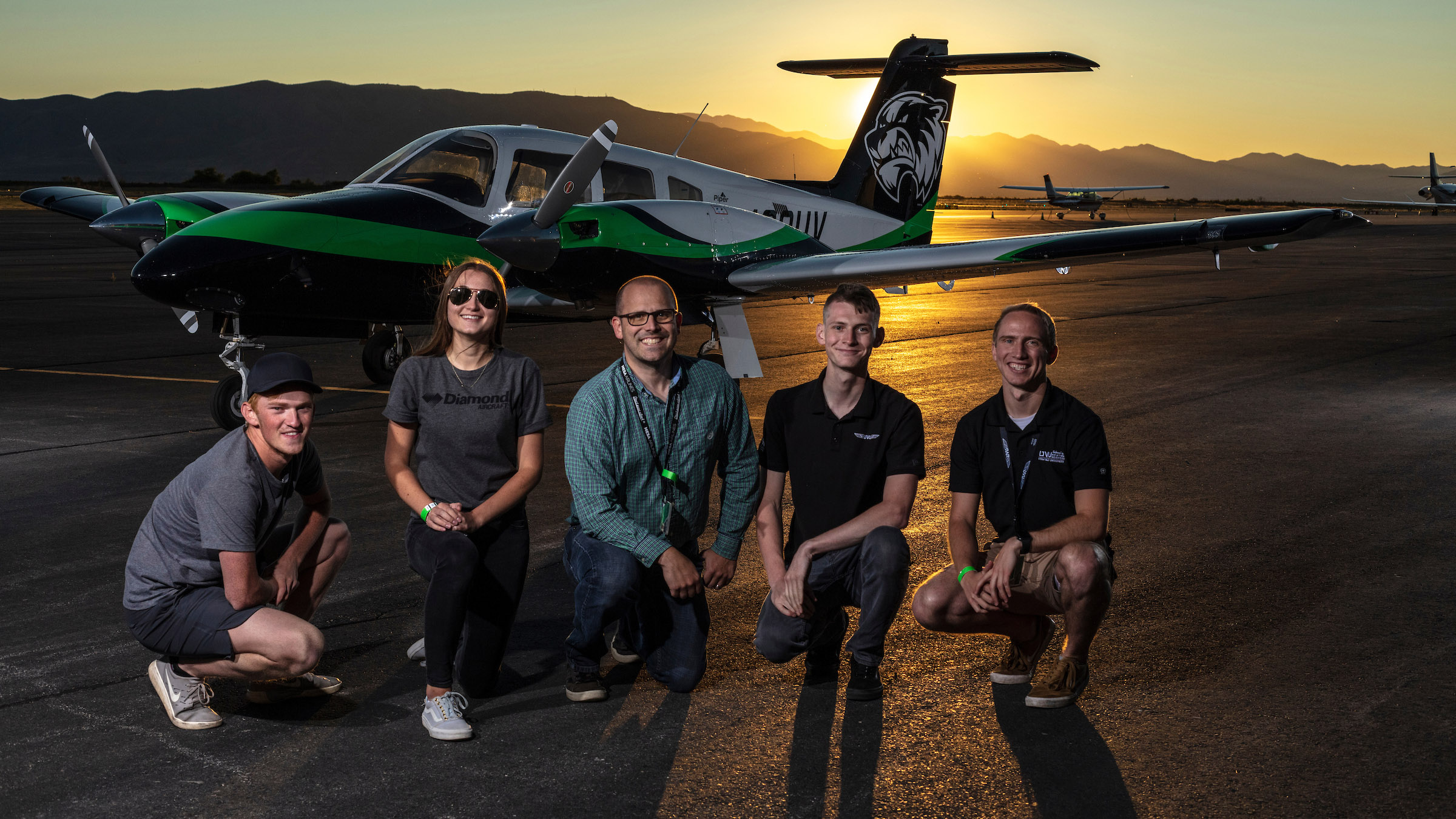With a mandatory retirement age of 65, many airline pilots are leaving the field. Utah Valley University is offering opportunities to alleviate that shortage, and the purchase of new aircraft will help.

With a mandatory retirement age of 65, many airline pilots are leaving the field. Utah Valley University is offering opportunities to alleviate that shortage, and the purchase of new aircraft will help.
One of a small number of flight training programs in the nation associated with a university, UVU’s School of Aviation Sciences has been a leader in the effort.
“Aviation will continue to grow and it is going to require well-educated pilots,” said Randy Johnson, chair of the school. “We support that effort by offering flight education in the form of helping students get their certificated and ratings. That requires aircraft.”
And those aircraft, like our family vehicles, can reach a point where it is more expensive to maintain them than to replace them. UVU recently followed that option by purchasing nine four-seater aircraft, bringing its total to 19 available for teaching the skills. That is in addition to two two-seater planes UVU retained, and four nearly new Piper twin-engine aircraft. The students need those to attain their multi-engine rating.
Not only will the additional aircraft allow more students to take the courses, they will provide more efficient maintenance and scheduling.
“Our availability for the students is really good right now,” said John James, the school’s chief of maintenance.
“With this change, almost all of our training will be done with one aircraft,” chief flight instructor Alan Dennis said. “It will make it easier for our students. It makes an easier transition for our students when they progress from private pilot to instrument training. It also makes it easier for maintenance to control the availabilities of airplanes, keeping parts in stock and balancing the workload and scheduling.”
The DA40 planes are now used for the majority of training in the UVU Aviation Program. They are capable of helping students earn certifications in Visual Flight Rules (VFR) flight and Instrument Flight Rules (IFR) flight. Both certifications are important for pilots and these aircraft are prepared to train students in both.
The aircraft each average approximately 70 – 80 hours a month in the air, James said.
The increased efficiency also makes it easier to ensure the safety of the aircraft, James said. “Safety is No. 1 for our students.”
And students are anxious to enter the program, even on a waiting list. More than 130 are enrolled in the program each semester.
“People want to come to UVU, James said. “We have a high-quality flight training program.”
The new planes have four seats instead of the two in the older models. With the extra seats, additional students can gain real-time experience.
“We have been a leader and we have a good reputation for quality training,” Dennis said. “I think we have been moving in a good direction, improving the quality and producing pilots that are save, competent and knowledgeable.”
“Our program is strong on training the knowledge level of the pilots,” he added. “You can take someone and train them to fly, and they do a pretty good job. A professional pilot should have a lot higher level of knowledge and awareness, and how to be safe. That takes critical thinking.”
“We are excited that we have the newest aircraft to education our student pilots,” Johnson said. “We have the newest equipment. They are learning the most up-to-date techniques and have the best equipment and safety.
“We have been growing for the last few years, both in the pilot program and others. We added our third program, aerospace technology management for people in the industry. This program is designed to help them complete their four-year degree and move into management.”
Although a lot of attention goes to learning to be a pilot, UVU’s School of Aviation Sciences has other areas of emphasis.
“Pilots actually comprise a very low percentage of the whole industry,” Johnson said. “We educate aviation management students as well, and those studying the managing sector of aerospace, even students interested in commercial space operations.”
This article first appeared in the Provo Daily Herald on Aug. 23, 2020.